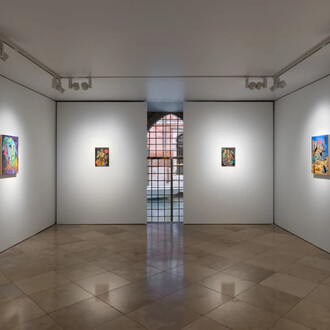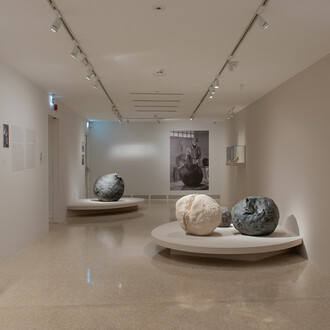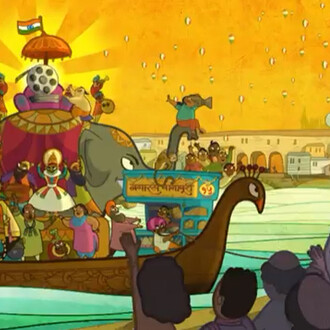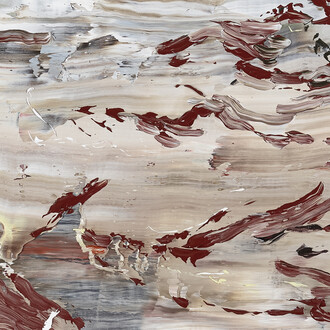The Pinault Collection presents Thomas Schütte. Genealogies at the Punta della Dogana, the first major retrospective in Italy of this artist (b. 1954, Oldenburg, Germany), based on the exceptional series of his works housed in the Pinault Collection. The exhibition has been curated by Camille Morineau, an independent curator, and Jean-Marie Gallais, Curator at the Pinault Collection.
Unclassifiable and multi-faceted, Thomas Schütte’s takes an unsettling and ironic look at the human condition, blending techniques and genres. Sculptures, archi tectural models, photographs, drawings, and etchings constitute a veritable repertoire that has been evolving constantly since the late 1970s. The theme of the figure, the face, and the body is the most broadly represented in the Pinault Collection. It is used here as a leitmotif, as it reflects the artist’s explorations from the 1970s to the present day.
Without following a strict chronology, the exhibition retraces the birth of forms and their variations in Schütte’s work, bringing together almost fifty sculptures from the Collection, and some on loan from the artist, with approximately one hundred works on paper, many of which have never been shown before. The exhibition’s layout designed by Camille Morineau and Jean-Marie Gallais follows the evolution of certain recurrent motifs in the artist’s work: representations of the male and female, as well as more abstract figures, architectural models and the relationship to space. Though less known to the general public, Thomas Schütte’s works on paper represent a key aspect of his practice. In the rooms of the Punta della Dogana, the three-dimensional nature of the sculptures creates an ongoing dialogue with the two-dimensional drawings, watercolours, and etchings. Thomas Schütte has an intimate relationship with works on paper, which have formed a parallel, comple mentary practice to his sculptures throughout his career and which reveal other aspects of his oeuvre.
The exhibition highlights themes as well as the creative process of an artist who plays with the circulation of motifs throughout his work, sometimes after years of interruption, as if he were working with a repertoire that was constantly evolving from one series to the next. The exhibition’s layout also highlights the experimental nature of the artist’s work through changes in scale and materials. This allows the viewer to discover the main typologies of Thomas Schütte’s representations, such as the sculptures of simple, double, or conjoined heads, the standing figures imprisoned in the material, the imposing and almost satirical busts inspired by both Ancient Roman busts and our contemporary political and social climate, the sculptures of reclining female bodies that refer to the history of art, the non-gendered faces, and his grappling with the monumental.
Caricatured, sometimes mishandled, always poignant, Schütte’s figures —the central subject of the works in the Pinault Collection—come to life in clay, wax, ceram ics, glass, steel or bronze, as full-length portraits or as heads of character, while remaining anchored in his drawing. Reconciling violence and ingenuity, intimacy and theatricality, seriousness and humour, the artist’s singular universe has earned him a major role in the world of contemporary art.
The exhibition is accompanied by a visitor’s guide and a catalogue pul ished in collaboration with Marsilio Arte (Venice) with texts by Jean-Marie Gallais, Camille Morineau and Antonia Boström, and by cultural events open to the public, including the programme of film screenings curated by film critic Dominique Païni.












